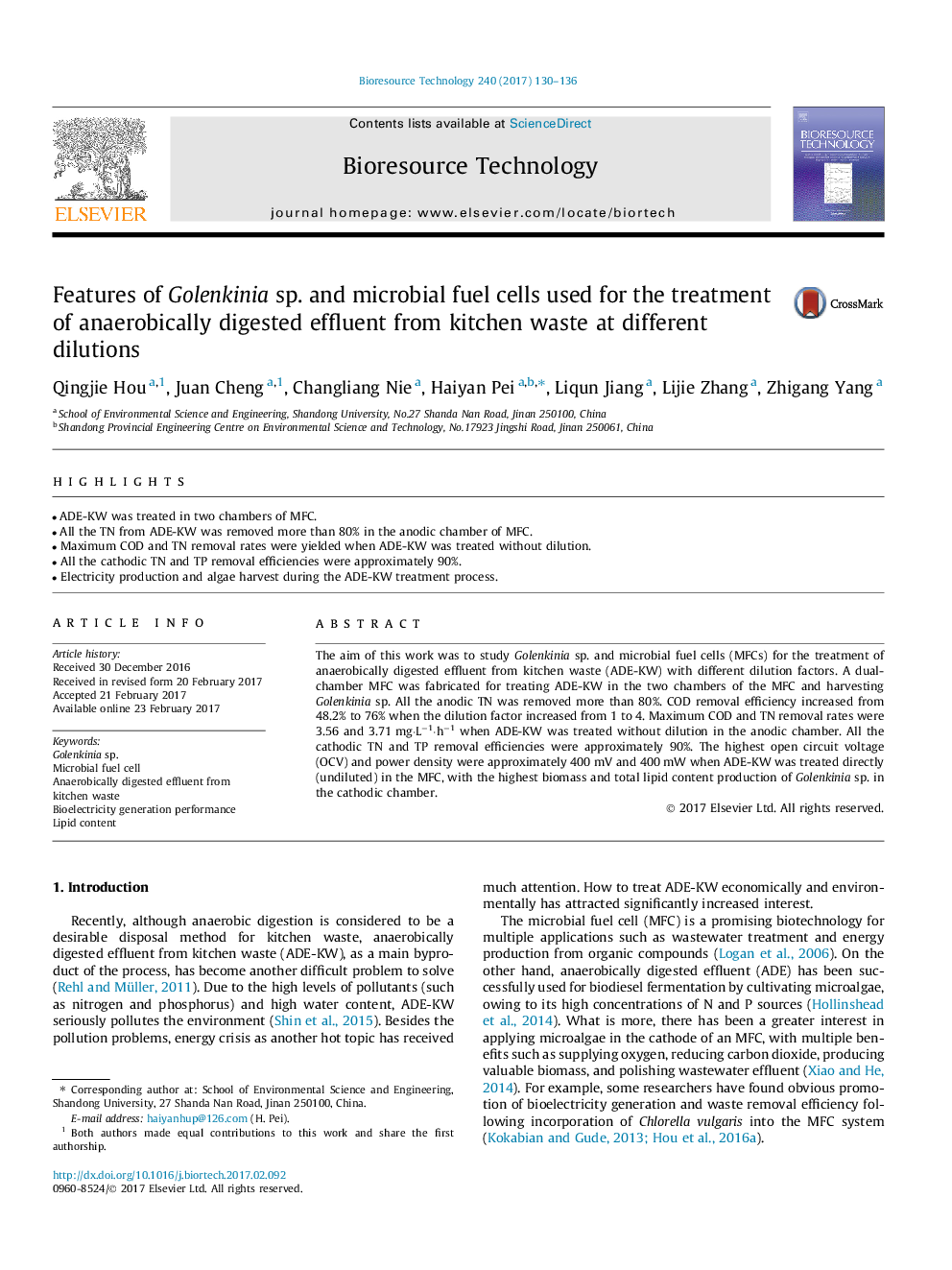| Article ID | Journal | Published Year | Pages | File Type |
|---|---|---|---|---|
| 4996735 | Bioresource Technology | 2017 | 7 Pages |
â¢ADE-KW was treated in two chambers of MFC.â¢All the TN from ADE-KW was removed more than 80% in the anodic chamber of MFC.â¢Maximum COD and TN removal rates were yielded when ADE-KW was treated without dilution.â¢All the cathodic TN and TP removal efficiencies were approximately 90%.â¢Electricity production and algae harvest during the ADE-KW treatment process.
The aim of this work was to study Golenkinia sp. and microbial fuel cells (MFCs) for the treatment of anaerobically digested effluent from kitchen waste (ADE-KW) with different dilution factors. A dual-chamber MFC was fabricated for treating ADE-KW in the two chambers of the MFC and harvesting Golenkinia sp. All the anodic TN was removed more than 80%. COD removal efficiency increased from 48.2% to 76% when the dilution factor increased from 1 to 4. Maximum COD and TN removal rates were 3.56 and 3.71 mg·Lâ1·hâ1 when ADE-KW was treated without dilution in the anodic chamber. All the cathodic TN and TP removal efficiencies were approximately 90%. The highest open circuit voltage (OCV) and power density were approximately 400 mV and 400 mW when ADE-KW was treated directly (undiluted) in the MFC, with the highest biomass and total lipid content production of Golenkinia sp. in the cathodic chamber.
